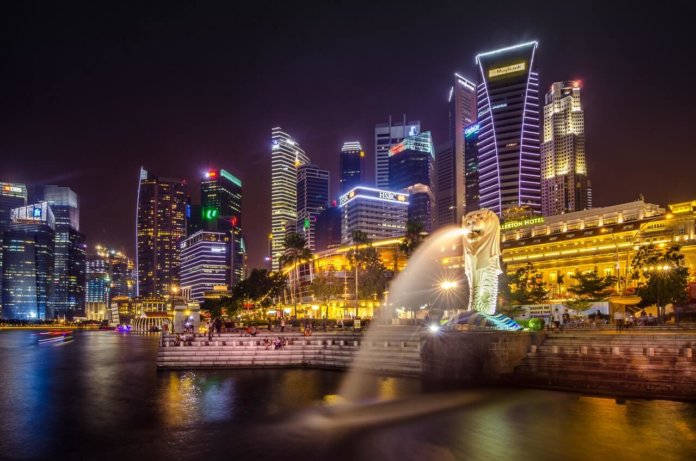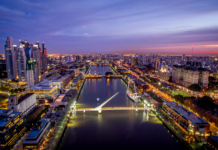
Sovereign wealth funds are defined as state-owned investment funds or entities. Their ultimate purpose is to invest a country’s money in a way that reaps fiscal benefits for its citizens in the long run. Traditionally, many of the largest funds were created on the back of petrodollars. As the price of oil plummets, sovereign wealth funds begin to play tremendously important roles in petroleum-fuelled economies.
According to the Sovereign Wealth Fund Institute (SWFI), the 40 existing sovereign wealth funds in the world collectively control $7 trillion, with over half of that amount coming from oil revenues.
Our list of the top 10 largest sovereign wealth funds from around the world
10. National Social Security Fund
Amount: $249.6 billion
Country: China
Established: 2000
The National Social Security Fund is just one of four sovereign wealth funds in China. Its primary role is to create wealth for the nation’s social security and is managed by the National Council for Social Security Fund (SSF).
In 2014, the fund based nearly half of its investments in fixed-income assets. Around a third of its investments were made in domestic stocks, while oversea stocks were at 8.28%, industrial investments at 13.65%, and cash investments a mere 0.96%.
9. Qatar Investment Authority
Amount: $256 billion
Country: Qatar
Established: 2005
The Qatar Investment Authority was created to manage the surplus income from the tiny nation’s disproportionately huge oil and natural gas industry. It has since reverted its focus from the energy sector and is now active in diversified foreign and domestic investments.
The bulk of the QIA’s investments are made outside the country. It invests in a number of financial instruments such as equities, credit and fixed income securities, private equity, and real estate. The fund owns a real estate company called Qatari Diar. It owns shares in major companies around the world, including Barclays, Volkswagen Group, and Porche.
8. Government of Singapore Investment Corporation
Amount: $344 billion
Country: Singapore
Established: 1981
The Government of Singapore Investment Corporation is tasked with managing the money of the Singaporean government and the Monetary Authority of Singapore. The fund is comprised of the country’s foreign reserves. It was instituted by the first Deputy Prime Minister Goh Keng Swee for the future and welfare of the nation’s people.
The fund is comprised of two parts: the Reference portfolio and the Policy and Active portfolio. The Reference portfolio is passive and is made up of 65% global equities and 35% global bonds. The P&A portfolio has two active portfolios, with the Policy portfolio allocated among six asset classes and based on long-term returns. The Active portfolio seeks to outperform it. The bulk of the fund’s portfolio is invested largely in North and South America, with the remainder split almost equally between Europe and Asia.
7. Hong Kong Monetary Authority Investment Portfolio
Amount: $417.9 billion
Country: China – Hong Kong
Established: 1993
The Hong Kong Monetary Authority Investment Portfolio’s Exchange Fund was originally established in 1935 through a merger of the Office of the Exchange Fund and the Commissioner of Banking.
The Exchange Fund is broken into three parts: the backing portfolio, the investment portfolio, and the strategic portfolio. The fund also invests in a wide range of currencies and instruments. Its makeup is 75% bonds and 25% equities.
6. SAFE Investment Company
Amount: $547 billion
Country: China
Established: 1997
The SAFE Investment Company is a subsidiary of the Chinese State Administration of Foreign Exchange, which manages the country’s foreign exchange reserves.
Although the fund’s total amount is publically known, its specific investments are not as clearly revealed. It is understood that the fund invests in a wide variety of areas, including foreign and domestic equities, as well as fixed income securities.
5. Kuwait Investment Authority
Amount: $592 billion
Country: Kuwait
Established: 1953
As with many other petroleum-based economies, the Kuwait Investment Authority is a fund for the surplus oil revenue. It is also the world’s first, thus oldest, sovereign wealth fund. In 1982, it officially became an autonomous governmental body managing the assets of the country. In 1982, it officially became an autonomous governmental body managing the assets of the country.
The fund is largely split between two separate funds, the General Reserve Fund and the Future Generations Fund. The fund generally shies away from obtaining a majority or controlling interests in a company, with the exception of real estate and investment holding companies.
4. SAMA Foreign Holdings
Amount: $668.6 billion
Country: Saudi Arabia
Established: 1952
SAMA Foreign Holdings is controlled by the Saudi Arabian Monetary Agency, the nation’s central bank that was established in 1952. The fund receives the bulk of its wealth from Saudi Arabia’s massive oil industry, and it manages a number of public pensions.
The fund is secretive about its investments, but it is largely understood to channel funds into conservative asset classes such as bank deposits and US Treasury bonds. It also reportedly looks to the Norwegian sovereign wealth fund as a role model.
3. China Investment Corporation
Amount: $746.7 billion
Country: China
Established: 2007
The China Investment Corporation is a wholly state-owned company that gains its funding from managing a part of China’s foreign exchange reserves. As of 2015, the foreign exchange reserves of China stood at $ 3.65 trillion, making it the largest foreign exchange reserve in the world.
The CIC invests nearly half of its funds in public equities, with just over a quarter of the money channeled into long-term investments. Almost half of its public equity investments are made in the US while a third of it is invested in non-US advanced economies. The CIC’s investment decisions are made based on a three-layer asset allocation framework: strategic asset allocation, policy portfolio, and tactical asset allocation.
2. Abu Dhabi Investment Authority
Amount: $773 billion
Country: UAE – Abu Dhabi
Established: 1976
The Abu Dhabi Investment Authority receives the majority of it’s funding from the Abu Dhabi National Oil Company and its subsidiaries. 70% of the payments into the fund are sent to the ADIA while the remaining 30% is sent to its sister fund, the Abu Dhabi Investment Council. Though the fund is owned by the government of the UAE, it is kept at arms length and run by its own governing body.
The ADIA invests in a wide spectrum of assets and regions. The largest portion of the fund invests in developed equities, followed by emerging market equities and government bonds. It also invests heavily in North America, while dividing up the rest of its investments in Europe and emerging markets.
1. Government Pension Fund – Global
Amount: $882 billion
Country: Norway
Established: 1990
This Norwegian wealth fund was created to pool the surplus profits gained from the Norwegian petroleum industry. It was known until 2006 as the Petroleum Fund of Norway. Despite being called a pension fund, it does not derive its backing from pensioners, but rather oil profits.
The fund is managed by the Norges Bank Investment Management company, with the understanding that its purpose is to support the country in post-oil times. It has been used to invest in over 9,000 companies in 75 countries with most of these investments made equally between Europe and North America. Their investments are largely in equity, but a third is in fixed-income and a very small percent in real estate.









